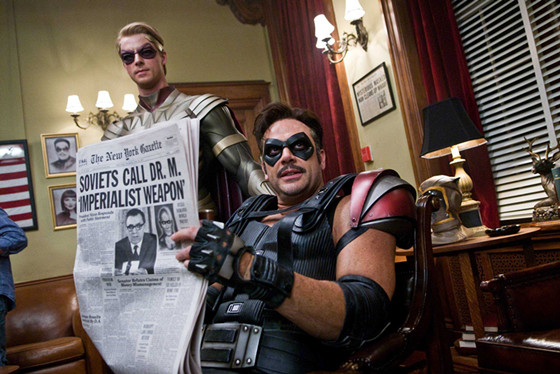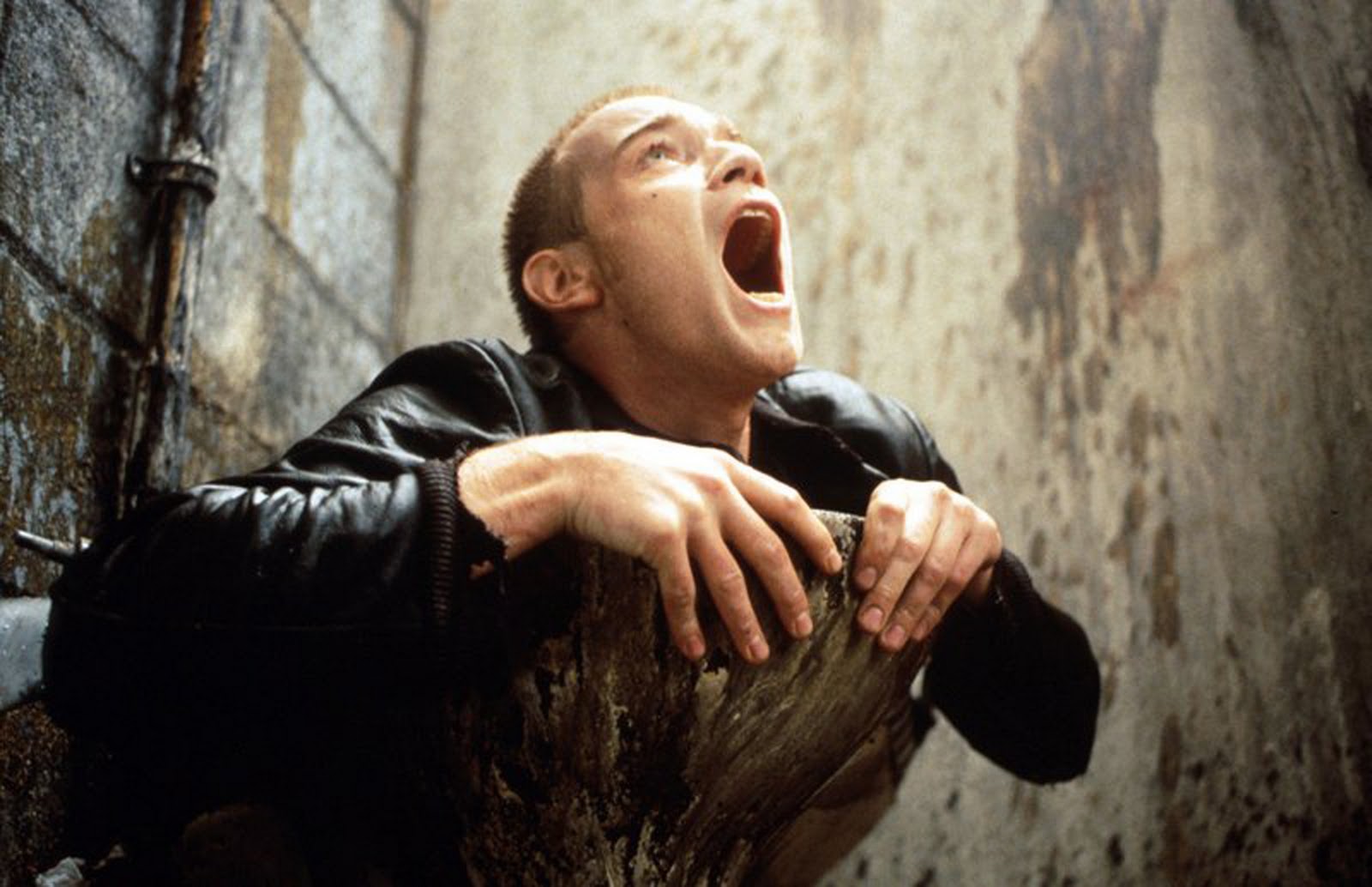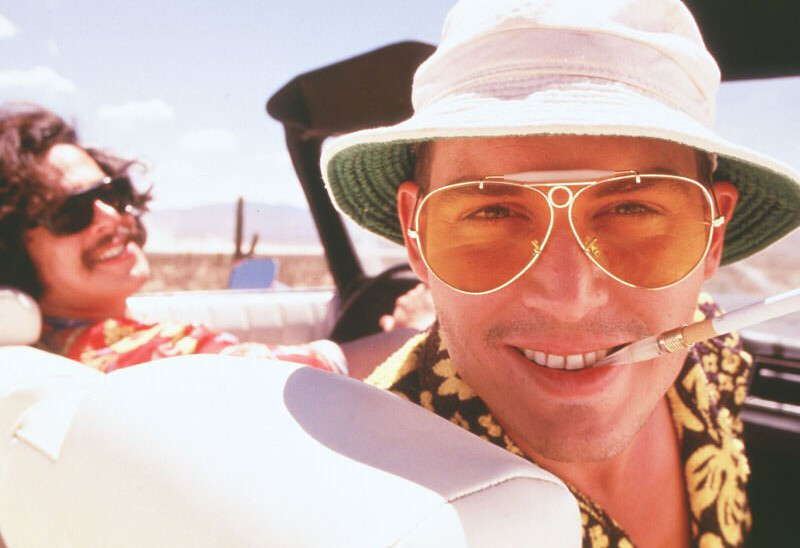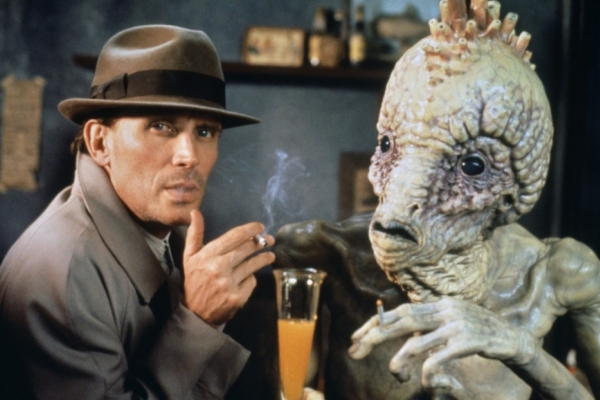5. Watchmen

Alan Moore’s most famous work and the penultimate graphic novel, Watchmen remains a masterpiece of the comics medium. A true literary labyrinth of art and word, it tackles the fundamental flaws of the human superhero and why it will never be truly realized. It’s a grand satire that borders on apocalyptic tragedy and metafiction, triggering a brutal reassessing of the idea of the superhero concept.
Many had tried and failed to take this story to the silver screen (the most interesting of these ideas was Terry Gilliam’s intention to turn Watchmen into a miniseries), but the job of directing the adaptation of the sequential epic fell to a controversial choice. Zack Snyder, at the time, was known for directing 300 and the 2004 remake of Dawn of the Dead. His directorial style is one of striking visuals and impressive effects, but lackadaisical substance and poor characterization.
This immediately raises red flags because of the immensely challenging narrative and visual scope of Watchmen, intertwined in such a way that the original graphic novel would fall apart if the former did not exist with the latter. Snyder could be seen as something of a b-movie director, making films that somewhat appealed to audiences that didn’t go to the movies to be challenged but to merely be entertained.
Snyder’s Watchmen adaptation continues to be a lightning rod of eternal contention, with some praising it and others panning it. So much of that crucial substance was gone, and in its place was a Hollywood spectacle. But what a spectacle! It could be said that the film could be called Hollywood’s only avant-garde superhero film.
It’s not an easy film to appreciate, especially if one is a fan of Moore’s book, but one can certainly appreciate the result. Snyder captures the epic nature and scope of the graphic novel, and given the script’s obvious compromises, it remains the best attempt at bringing Watchmen to life.
The actors really do bring these characters to life, many classic moments are realized quite well, has a fantastic title sequence that gives you all the backstory you need, and, controversially, the film takes a massive liberty with its ending that could be argued to be better than the graphic novel’s ending. It’s certainly not perfect, but one cannot deny its impressive in ambitions and commendable in results.
4. Trainspotting

Irvine Welsh’s much-loved 1993 debut novel is a smorgasbord of heroin, low-lifes, unambitious youth, and Scotland. The film adaptation, released in 1996 and directed by Danny Boyle, is widely regarded as the best Scottish film of all time, as well as one of the best films of the 1990’s, period.
A complete madhouse of addiction and choosing life, the differences between the film and novel are few and far between, both revolving around Renton, Spud, Sick Boy, and Begbie and their petty escapades. However, the biggest difference is that the novel does not follow the story presented by the film. At least not in the way you might think.
The novel is a collection of short stories surrounding heroin abuse in the town of Leith. While it can be argued that the film takes those stories and strings them together quite seamlessly, the scattershot nature of the novel is far more suitable for the lives of its characters, unpredictable and at times reprehensible. While the novel is less focused and singular than the film, it has more leeway in establishing its characters, as well as welcomes a level of stream-of-consciousness casualness.
The film gives us a look into Renton’s mind (see his ‘choose life’ speech), the novel presents numerous perspectives in each story, not just Renton’s. The film has an almost hip energy to it, while the novel carries on with a Bukowski-type dirt-level realism. Although these differences are major, it doesn’t take away from the film’s power and energy. Trainspotting is an example of an adaptation that can absolute stand on its own, regardless of its major differences from the novel.
3. Fear and Loathing in Las Vegas

Long sought after by the likes of Ralph Bakshi, Martin Scorsese, and Oliver Stone, the 1998 realization of Hunter S. Thompson’s classic 1971 gonzo blueprint is as wacky as the man who ultimately directed its adaptation, Terry Gilliam. Praised for its visuals and faithfulness but criticised for its incoherence and aimless narrative, Fear and Loathing in Las Vegas has found an appreciative and slowly growing cult audience over the years.
Believe it or not, Thompson himself praised the film for its accuracy to the novel. Although this is a list about unfilmable novels and their failed cinematic adaptations, this is the most successful adaptation in terms of translating novel to film. The stream-of-consciousness nature of the novel is reworked into a psychedelic aesthetic that echoes the drug-addled perspective Thompson experienced these events through. It’s a startling exploration of the first glimpse at the post-flower power era.
Thompson’s hilarious anecdotes and bizarre personality is brought to zany life by Johnny Depp in one of his best roles, Gilliam’s signature visual madness is at full-power (i.e. the lizards in the bar scene), and it has a script so close to its original source material that its arguably gone unmatched since its release.
How it demonstrates the novel’s unfilmable nature is the polar opposite of the previous entries on this list: the other films all compromised the things that made their source materials’ stand on their own.
But those films were successful, Fear and Loathing was not. It bombed significantly upon release and critics were polarized in their reactions. However, the film sacrifices nothing from the novel, and it shows. It follows the novel almost to a T, and because of it, it’s more inaccessible than most films on this list. But it must be commended for its faithfulness, unrivaled in its recreation of Thompson’s written experiences.
2. Fellini Satyricon
![]()
Federico Fellini was one of cinema’s great talents, a man who could never do wrong with anything story he touched. However, it could be said that he might have met his match in the form of Petronius’ partially-lost Roman novel Satyricon. Existing forever in episodic fragments loosely connected by the thinnest of threads, Satyircon remains a fascinating read, if unusual and archaic.
According to legend, Fellini read the novel during a bout with an illness and was enthralled with the idea of fleshing out possible connections between the fragments, thus leading to the creation of Fellini Satyricon, a radical reworking of the novel. Its filled with sex and violence and lots of debauchery, just like the novel, and has many of the original characters and set-pieces.
But of course, its not a perfect adaptation merely because the novel, in its current form, is incomplete. Many of the fragments have been lost to time for thousands of years and as a result, the novel itself suffers from some incoherency. Regardless, Fellini Satyricon is Fellini’s interpretation of the novel in its partial form.
The film is not perfect, and some could say it really isn’t a ‘true’ Fellini film, but it is an interesting take on a classic text that’s more interested in theorizing about those lost fragments and bringing a wild and eccentric portrayal of ancient Rome to life, something all to possible by the hand of Fellini in the age of flower power and sexual revolution.
1. Naked Lunch

David Cronenberg once said that a true adaptation of Naked Lunch would cost $400 million and would be banned in every country in the world. This truth rings throughout this metafictional nightmare about the creative process.
William S. Burroughs is one of the great literary legends of the 20th century, a reputation that both expands far beyond literature and is cemented by his greatest work, Naked Lunch. A depraved kaleidoscope of paranoia, pedophilia, bug powder, and evil doctors, Naked Lunch would bring
about a filmmaker’s undoing. How does one go about adapting the un-adaptable into some semblance of a film?
Well, according to Cronenberg, you don’t. Instead, you make a surreal interpretation of Burroughs’ process of writing the novel. With Peter Weller playing Bill Lee (the name itself a frequent pen name) as an exterminator/murderer turned writer, alongside a host of talking bug-typewriter hybrids and shady characters with even shadier intentions, the film focuses on the mindset and events that led to Naked Lunch’s creation, from Burroughs’ intoxicated shooting of his wife Joan Vollmer to his self- imposed isolation in Tangiers, where the novel was mostly written.
Using an unusual narrative frame involving the Interzone and interspecies secret agents and lots of symbolism and sly references to writing, Cronenberg has crafted less an adaptation and more an explanation of Naked Lunch, instead choosing to fuse elements of the novel with elements from Burroughs’ own life. This decision resulted in a strange mix of biography, paranoid fiction, deadpan black comedy, and surrealist horror, a mix that continues to be unmatched.
For something inherently unfilmable, Naked Lunch decides to do a total left-turn from typical adaptations and has done something that hasn’t been attempted since. While the beat generation faithful have decried the film for having little-to-no semblance to Burroughs’ novel, others have praised the film for its immense risks and liberties, as well as unprecedented strangeness, a strangeness not seen in another studio film since its release.
Author Bio: Mason is an aspiring writer and life-long cinephile living in Alberta, Canada. He usually can be found hiding out in a local theater or library when he’s not writing. He’s also an amateur musician, artist, and novice Esperantist.